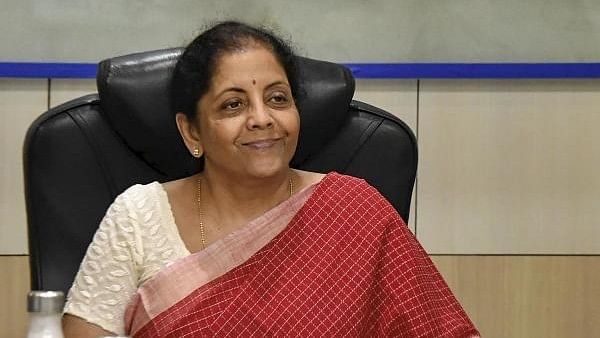
Finance Minister Nirmala Sitharaman.
Credit: PTI Photo
New Delhi: In the interim budget presented ahead of the Lok Sabha elections, Finance Minister Nirmala Sitharaman on Thursday outlined capital expenditure (capex)-led growth strategy and chose to walk the talk on fiscal consolidation.
Presenting her sixth consecutive budget, Sitharaman proposed to bring down the central government’s fiscal deficit to 5.1 per cent of GDP in 2024-25 and further to 4.5 per cent in 2025-26 from the projected 5.8 per cent in the financial year ending March 2024.
Revised fiscal deficit, or the gap between the central government’s income and spending, number for the current financial year is lower than the budgetary estimate of 5.9 per cent. In her last year’s budget, Sitharaman had pegged the fiscal deficit for year 2023-24 at Rs 17.87 lakh crore. The fiscal deficit stood at Rs 9.82 lakh crore in April-December period, which is 55 per cent of the full-year target.
Sticking to the fiscal consolidation path would send a positive message to the global investors and may lead to ratings upgrade.
“We are not only aligning with the fiscal consolidation roadmap that we gave earlier but are bettering it. It is that one simple statement that every rating agency should take on board,” the finance minister said while addressing a press conference after presentation of the interim budget.
“Fiscal consolidation path will be well received by rating agencies as well as the global investors that are eyeing India as an attractive investment destination,” said KVS Manian, whole time director of Kotak Mahindra Bank.
While maintaining fiscal discipline the finance minister has outlined a strategy to boost capital expenditure. Capex outlay for 2024-25 is proposed to be increased by 11.1 per cent to Rs 11.11 lakh crore, which would be 3.4 per centof GDP.
“Significant increase in capital expenditure underscores the government’s unwavering commitment to addressing India’s core economic needs and boosting economic growth,” said Sanjeev Krishan, Chairperson, PwC in India.
Last year the outlay for capital expenditure was increased by 33 per cent to Rs 10 lakh crore. Replying to a question whether the elections related guidelines would hamper the capex target in the current fiscal, Department of Economic Affairs Secretary Ajay Seth said the government is confident of meeting the targeted expenditure as the Model Code of Conduct would not impact the ongoing projects.
The central government’s total expenditure during the financial year beginning April 2024 is estimated at Rs 47.66 lakh crore against the revised estimate of Rs 44.90 lakh crore in the current financial year.
Total receipts other than borrowings for 2024-25 is pegged at Rs 30.80 lakh crore. The tax receipts are estimated at Rs 26.02 lakh crore, which is 11per centhigher than the revised estimate of Rs 23.2 lakh crore for the current fiscal.
The gross market borrowings are estimated at Rs 14.13 lakh crore in 2024-25, which is lower than the revised estimate of Rs 15.43 lakh crore in the current financial year. Net market borrowings from dated securities for the financial year 2024-25 is also estimated to be slightly lower at Rs 11.75 lakh crore as against a revised estimate of Rs 11.8 lakh crore in 2023-24.
“Now that the private investments are happening at scale, the lower borrowings by the central government will facilitate larger availability of credit for the private sector,” Sitharaman said.
In the interim budget, Sitharaman made a provision of Rs 75,000 crore to be provided as a 50-year interest free loan to support milestone-linked reforms by the state governments.
“Emphasis on state level reforms is very welcome as these are crucial to take the Indian economy towards the goal of becoming a developed nation,” said R Dinesh, president of industry body CII.